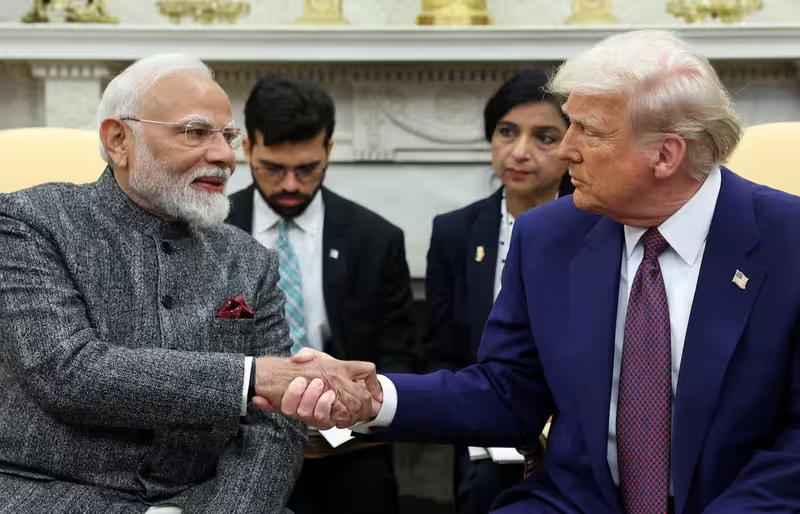
On August 4, 2025, U.S.-Indian relations took a turn when U.S. President Donald Trump announced that he would substantially increase tariffs on goods from India. Trump had been planning the move since last week, when he shared that he was negotiating with India on trade and could potentially impose a 25% tariff on goods starting August 1. This decision was made in response to India’s Russian oil purchases, to which Trump criticized that India doesn’t “care how many people in Ukraine are being killed by the Russian War Machine” on Truth Social. India ignored Trump’s threats, asserting that it would continue purchasing oil from Russia. When Trump planned to enact the tariffs after the refusal, Indian capital New Delhi, called the move “unjustified.”
Since 2022, India has faced pressure from the West to distance itself from Russia. However, New Delhi resisted that pressure, citing its economic relationship with Russia and its longstanding ties, which have existed since the Soviet Union. Over the weekend, two Indian government sources reportedly told Reuters that India would continue purchasing oil despite the existing threats. A spokesperson for India’s foreign ministry had also asserted that India would “take all necessary measures to safeguard its national interests and economic security.” The statement then explained that initially, India had begun importing oil from Russia because, after the Ukrainian conflict started, traditional suppliers focused on sending oil to Europe instead. Having a lack of oil suppliers for India would thus raise prices for Indian consumers, and the spokesperson defended importing Russian oil as a “necessity compelled by the global market situation.” Next, the statement pointed out that many countries within the European Union were still involved in Russian trade, arguing that “the very nations criticizing India are themselves indulging in trade with Russia.”
Not only did Trump disapprove of India’s trade with Russia, but he also condemned the country’s involvement in BRIC: a group involving Brazil, China, Russia, South Africa, and others, which Trump called “anti-United States.” Although India and Brazil only see BRIC as a means of economic development, China and Russia view it as a geopolitical group, which is why Trump regards Indian involvement as threatening. Consequently, Trump warned India that he could impose additional tariffs if India does not leave BRIC. Next, he targeted U.S. companies that manufacture in India, urging them to invest in the United States instead or face financial penalties. This is a stark contrast to Indian Prime Minister Narendra Modi’s campaign, which encourages foreign investment in India with a slogan: “Make in India.” Unlike Modi, Trump believes in “America First,” which represents prioritizing America’s global interests and focusing solely on domestic policy. New Delhi sees both of Trump’s moves as coercive, denouncing them as “gross interference” and reasserting that its connections with Russia and BRIC are a market necessity, rather than political alignment.
While the latest tariff escalation underscores growing tensions between Washington and New Delhi, it also highlights the broader struggle between national sovereignty and global pressure in the current geopolitical climate. India’s refusal to bend to U.S. demands reflects its new goals in pursuing an independent foreign policy and maintaining sovereignty over its actions. On the other hand, Trump’s moves signal a willingness to expand American and Western power across the globe, even risking economic retaliation to do so.
Written by Claire Liu


